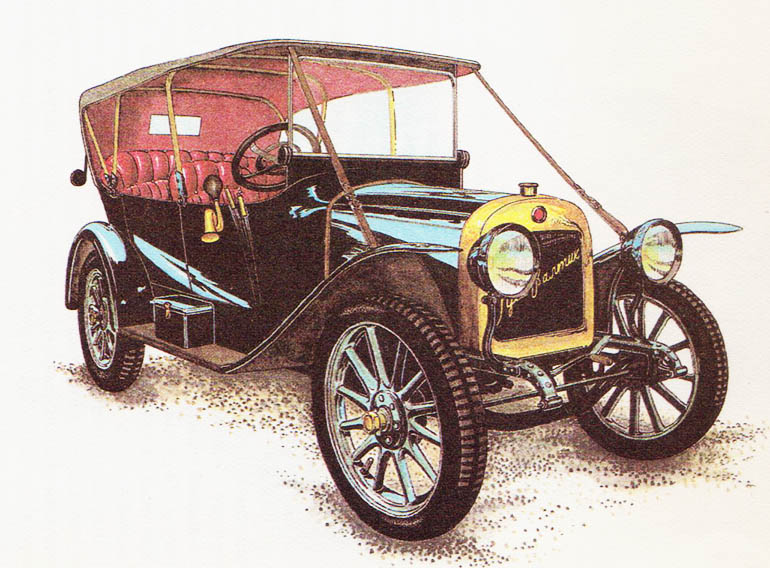RUSSIAN-BAŁT – year 1913
Manufacturer: Russko Bałtijskij Wagonnyj Occupation, Riga, Russia
The first Russian car was presented in May 1896 r. at the All-Russian Art and Industry Exhibition in Nizhni Novgorod. It was a 2-seater "horse-less carriage”, with a 1-cylinder engine of power 1,1 kW (1,5 KM). The vehicle had a weight 300 kg and developed maximum speed 20 km/h. It was produced by two plants: a workshop building carriages P. Frezego and the E engine factory. Yakovlev. At that time, such foreign cars were imported to Russia, how: Benz, Adler, Panhard Levassor, or were produced under license - de Dion-Bouton, Daimler Castatt, La Buire and maybe that's why nobody was interested in the native car.

W 1908 r. car production started at the Russo-Bałt plant in Riga. Annually it left the factory 100 do 140 vehicles. There were four types of passenger cars - the K model, with an engine of power 17,6 kW (24 KM), role models, with an engine of power 25,7 kW (35 KM), model S, with power 29,4 kW (40 KM), and the most powerful model with an engine of power 44,1 kW (60 KM), moreover, three types of trucks. The plant also built special versions of passenger cars. Russo-Bałtu racing car with 1913 r. he reached speed on a flyby 128,5 km/h. The tracked Russo-Bałt z 1915 r., produced according to the patent of the manager of the garage of the tsarist court of K.. Kegresse, especially for the military.
W 1912 r. Andre Nagel, editor of the Awtomobil magazine, competed at the Russo-Bałta rally in the Monte Carlo rally. The start took place in St.. Petersburg, the route counted 3257 km and Nagel approx 40 times he slipped off the snow-covered road. He then used the sensational novelty of the so-called. „Anti deparants”, it was a leather belt with nails put on the tires - that is, the first anti-skid spikes.